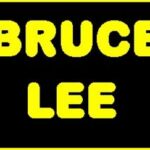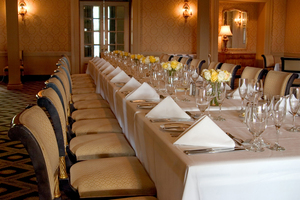Wing Chun is a system of martial arts developed approximately 300 years ago in southern China. The art was founded by a Buddhist nun, Ng Mui, who was a master of Shaolin Kung Fu. Wing Chun was named after Ng Mui’s first student, a young woman by the name of Yim Wing Chun. The style was kept very private for many years, until 1949 when Grandmaster Yip Man exposed it to the rest of the world. Yip Man became very well known for his dedication to Wing Chun, and his legendary student Bruce Lee.
Wing Chun is considered a soft style of self-defense as opposed to a hard style. The difference between the two is, a soft style relies on internal method. There is an emphasis on passive and evasive movements, as well as a focus on the use of the opponent’s own power against him/her. Whereas a hard style is the opposite, an example is karate, which uses linear striking techniques as its base of attack and defense. Wing Chun can be deceiving when it comes to hard and soft styles of self-defense. Even though Wing Chun is considered a soft style, it possesses many techniques that resemble the hard styles. For example, it’s rapid circular punching, which is a trademark technique of Wing Chun.
Wing Chun is literally translated as ”beautiful springtime.” It also can be referred to as Wing Shun, or Wing Tsun. Wing Chun can be broken down into three different varieties: side body, slant body, and pao fa lein, which involve weapons. The two main weapons of Wing Chun are the butterfly swords and the staff. The butterfly swords are short in length compared to most swords, and are very wide and flat with a hand guard, which protects from other weapons. The swords are usually not taught to a student until he/she becomes more advanced in Wing Chun. The staff, on the other hand, is totally different and can be used from the beginning of training. The staff is an aid in strength training the arms, and is often used vigorously to build the forearms of Wing Chun stylists. As a weapon, the staff is used entirely different, and can be applied in striking as well as sweeping an opponent. The weapons are only one of the five ways Wing Chun uses to defeat the enemy. The other four are; kicking, striking, joint locking, and throwing. In Wing Chun, all kicks are delivered to the opponent’s lower body (waist down). All kicks can be devastating if delivered properly, and are intended to disable the opponent’s legs. Striking is a big part of Wing Chun because it possesses mostly hand techniques, which are applied to the opponent’s upper body. Joint locking can be applied to the upper or lower body, depending on the situation. Throwing is usually applied when redirecting an opponent’s energy to be used against him/her. Throwing can work to ones advantage by creating a safer distance between one and his/her opponent. Any of the five ways above, when executed correctly, can disable any opponent of any size or strength.
Wing Chun is a martial art based on speed and agility, as opposed to brute strength. The style was designed to suit the smaller, weaker opponent. Wing Chun is a much more practical self defense than most others. There are no extreme flying kicks or acrobatic techniques, which require maximum flexibility and continuous practice. Wing Chun emphasizes natural and relaxed movements. Less is actually considered more in Wing Chun. The art is perfect for a female because it does not require a lot of physical strength as opposed to many other arts, which rely on physical power. Wing Chun is very internal, and usually comes easier to a woman than a man. A woman tends to slap or strike with a relaxed arm and hand, which is ideal for Wing Chun. A man is more likely to tense up and try to put his muscle into the strike. This is usually the result of man thinking more strength equals harder hit. A man tries to make use of being the physically dominant sex in many activities, even when physical strength is not required or needed, and can even work to his disadvantage like in Wing Chun.
Wing Chun is a form of close combat, and can be used in almost any situation. Other styles, like Tae Kwon Do, focus on high kicking techniques, which can be hard to apply in some circumstances. For example, if one is attacked in a tight or closed quarters like an elevator, he/she may have trouble executing an effective kicking technique to disable his/her opponent. Whereas in Wing Chun close combat is the primary focus, and requires very little distance between one and ones attacker. Unlike most styles, Wing Chun emphasizes avoiding an attack as opposed to blocking one. Shifting the body and covering with arms is ideal as opposed to blocking kicks or strikes head on. Wing Chun is also very energy efficient. There are certain gates, which determine how far one needs to move and cover his/her body. Most martial arts use blocking techniques that go far beyond what is necessary for avoiding contact with an opponents attack. Wing Chun only covers the body to its edges, and results in a faster, more efficient cover/block. The faster one can recover from defending against the attack, the faster one can attack his/her opponent.
There are three forms that make up all the techniques of Wing Chun. The first and most basic form is Sil Lum Tao, which focuses completely on the upper body techniques. The second form is called Chum Kil, and contains arm and leg techniques. The final form is Bil Jee. This form contains a variety of techniques and is more advanced as well as difficult. Continuous practice of the three forms results in better form and effectiveness of the techniques. Sticky hands is another famous training method in Wing Chun. This method is used to enhance ones balance, speed and trapping techniques. Trapping is key in Wing Chun. Many of the attack and defense techniques result in trapping ones opponent. Trapping can be very beneficial because one can gain control over ones opponent and end the confrontation.
One of the most common training devices used in Wing Chun is the wooden dummy. The wooden dummy consists of a long cylinder shaped body with three arms and one leg. Over 100 different techniques can be performed and practiced on the wooden dummy. The wooden dummy also plays a big role in conditioning the limbs. When practicing, the arms and legs are continuously being slammed against the wooden dummy as if it were a person. The forearms especially are being conditioned by the hard oak limbs. Most Wing Chun stylists end up with forearms of steel hardness. This can come in handy when covering against a kick, strike or punch. The Wing Chun stylist can literally break his opponents limb, just by blocking it.
Wing Chun is based on a centerline theory. The centerline is the nucleus in which the attacks and defenses are based on in Wing Chun. The centerline can be recognized in all of Wing Chun’s stances and positions. The centerline is basically the very center of ones body from top to bottom (head to groin). This line is always to remain protected, because an unprotected centerline could result in defeat. Another theory of Wing Chun deals with the immovable elbow. In a way it works like a storm, the eye of the storm always remains still, but the body of it is in constant motion, and exerting force. The forearm and hand are able to move in any direction, but the elbow must remain still. If pressure is put on the arm, it is better that the entire body give way than the elbow. Four corners make up the gates of Wing Chun. These four corners are called; the outside high gate, inside high gate, outside low gate, and inside low gate. The outside gates represent areas where the attack will be blocked outwards, while the inside gates represent areas where the attack will be blocked inwards. These four gates have boundaries, which are basically from the top of ones eyebrows to the bottom of ones groin area, and just beyond each shoulder. When covering or blocking an incoming attack, the elbow must remain still, while the forearm and hand proceed, but not beyond the boundaries. To proceed beyond the boundaries is pointless and a waist of energy. This could also result in leaving oneself open to attack.
Wing Chun is very unique in its style of covering and attacking. In most martial arts, blocking or covering is done, and then preceded with an attack. Whereas in Wing Chun, covering and attacking are done simultaneously. This method is more to the point. By joining the two techniques into one motion, there is a better chance of success. Not to mention a smaller amount of time for the attacker to recover with another form of attack. The constant motion of Wing Chun is quite amazing. For example, when covering from an attack, one is attacking, but if his/her opponent covers, the opponent is simply pulled into another attack. This process is never ending, so how long can an opponent cover from the constant attacking. This is one of Wing Chun’s unique advantages.
The art of Wing Chun must be experienced to receive a full understanding of its power. It is hardly ever seen in movies, because it does not contain fancy kicks or flips. It would probably be to fast for moviegoers to enjoy anyways. However, Wing Chun is a very serious and useful form of self-defense. Its very practical and one does not have to be very strong to use it. Wing Chun is also very effective against all styles of fighting. Whereas many martial arts are only effective against their own style. Wing Chun is not for competition, but for self-defense purposes, unlike most styles. The reason Wing Chun is not used in competition, is because its techniques are too devastating, and could kill an opponent. The seriousness of Wing Chun is what sets it apart from other styles. In the world of martial arts, Wing Chun is in a class of its own.



